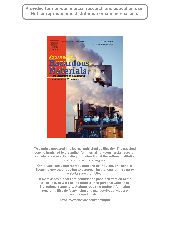摘要
Nanosized copper particles (nano-Cu), one of the representative metal nanometer materials, were used in several domains, and the potential toxicity was raised more and more attention. In order to investigate the cytotoxicity induced by nano-Cu in podocytes, which was the key player of the glomerular filtration barrier, podocytes were treated with different concentrations of nano-Cu. The 3-(4,5-dimethylthiazol-2-yl)-2,5-diphenyltetrazolium bromide (MTT) assay was used to measure the cell viability. Hoechst 33342 staining assay and Annexin V/PI double labeling assay were used to identify whether the cytotoxicity induced by nano-Cu was due to apoptosis or necrosis. The oxidative stress induced by nano-Cu and its mechanism were studied in relation to the generation of reactive oxygen species (ROS), superoxide dismutase (SOD) and malondialdehyde (MDA). As a result, while podocytes were treated with nano-Cu, the cell viability was significantly decreased and the apoptosis was significantly increased in podocytes. Results showed that nano-Cu affected the oxidant-antioxidant balance and had cytotoxicity in podocytes, resulting in the enhanced generation of ROS and MDA. Meanwhile, pretreatment with N-(2-mercaptopropionyl)-glycine (N-MPG), a type of ROS scavenger, could inhibit podocyte apoptosis induced by nano-Cu. Results suggested that the increased oxidative stress was a key mechanism in the podocyte apoptosis induced by nano-Cu, which could provide evidence for further research on the toxicity of nano-Cu.
- 出版日期2012-11-30
- 单位南开大学
